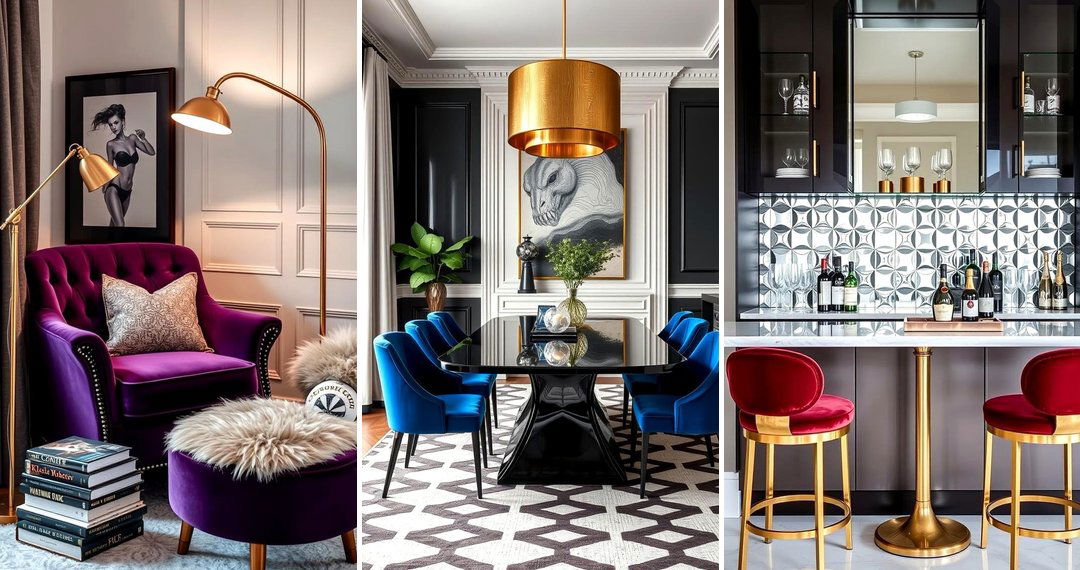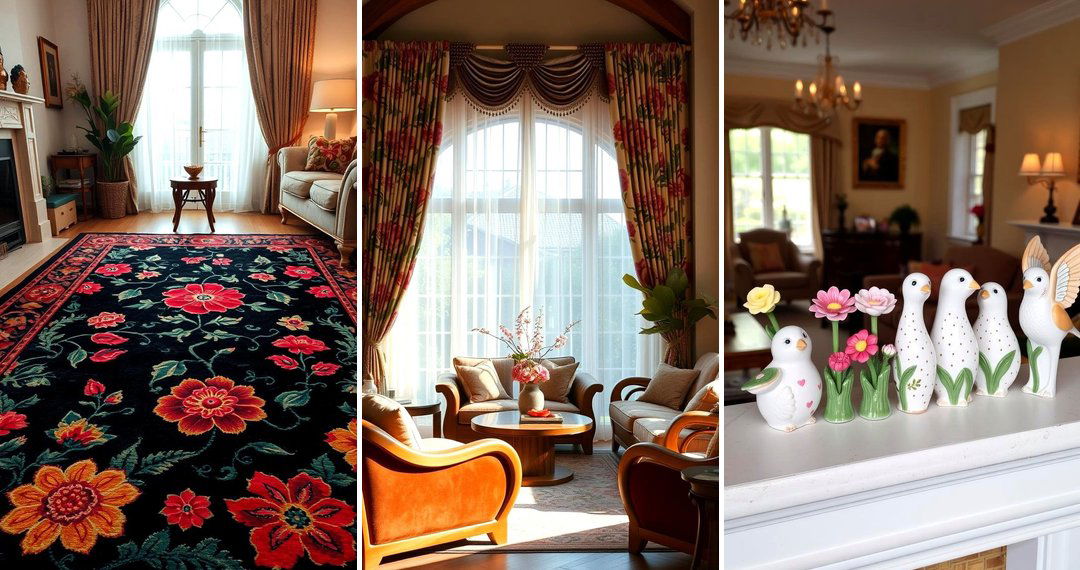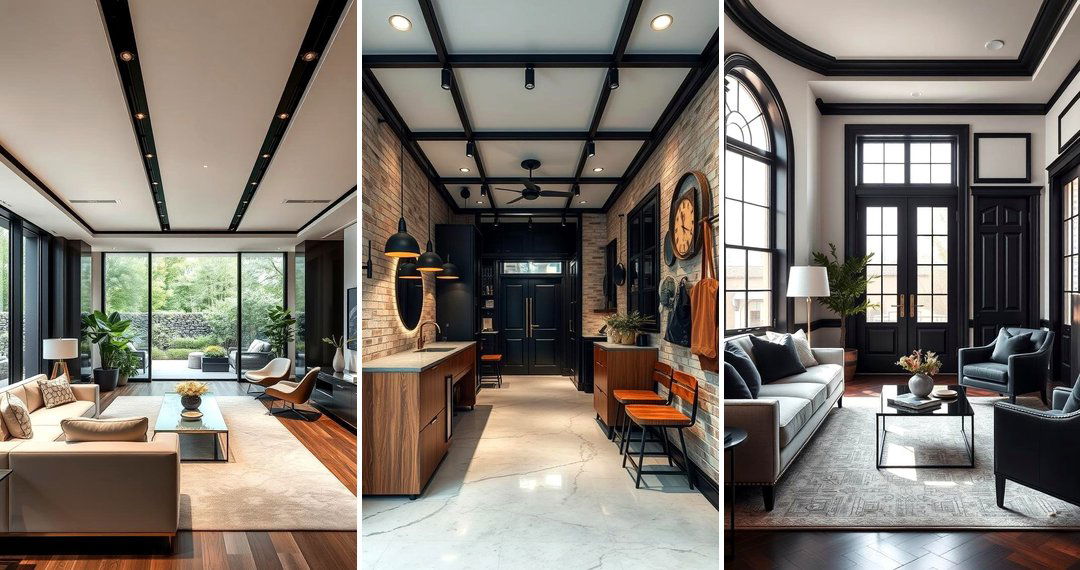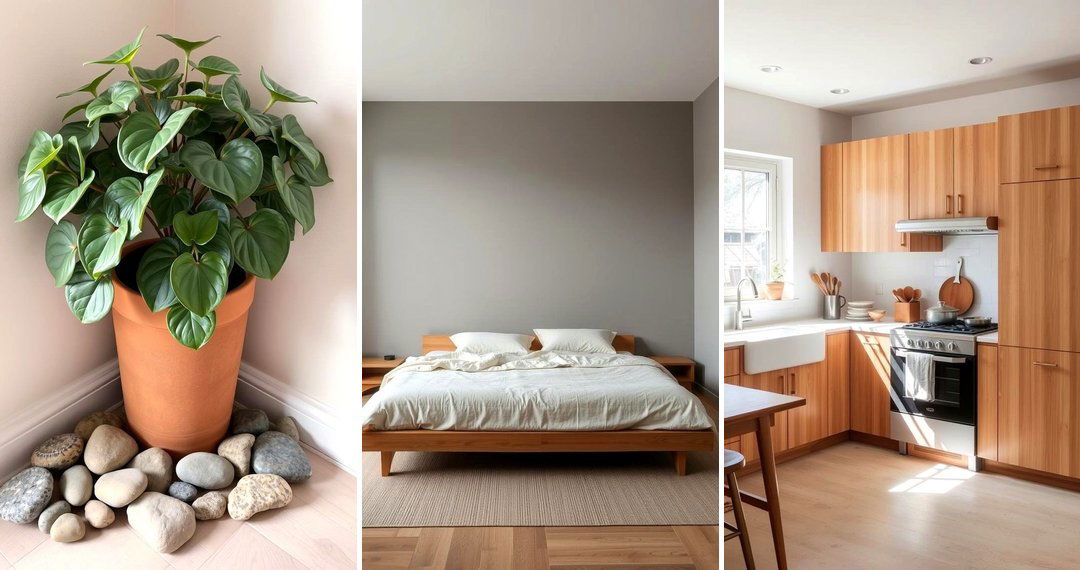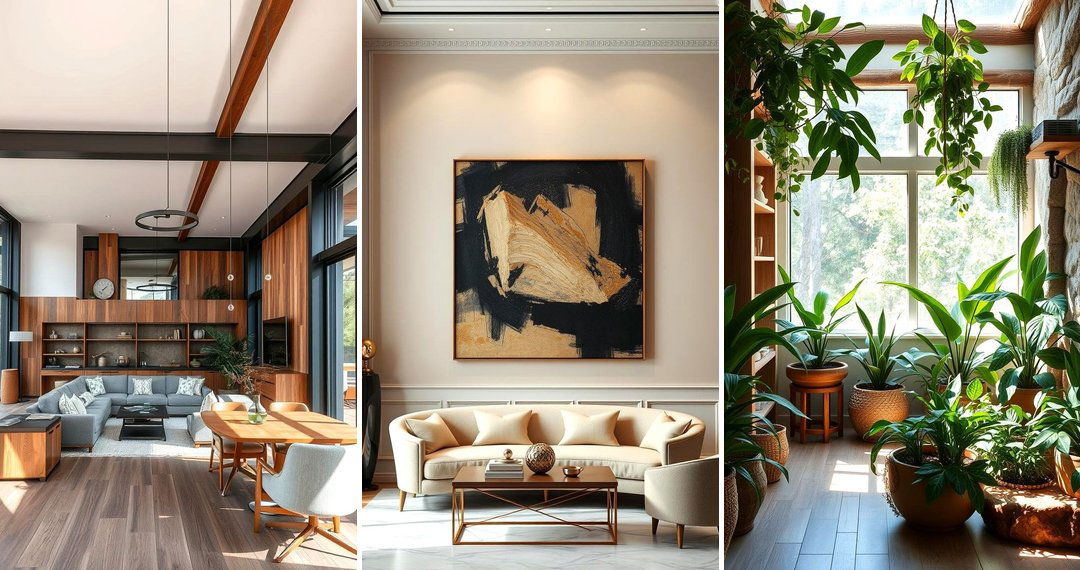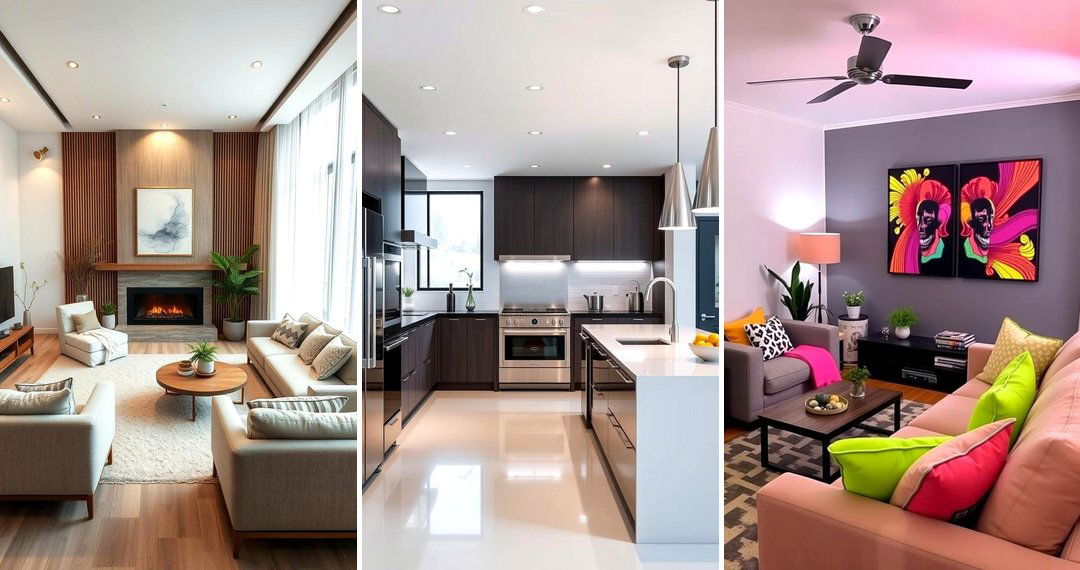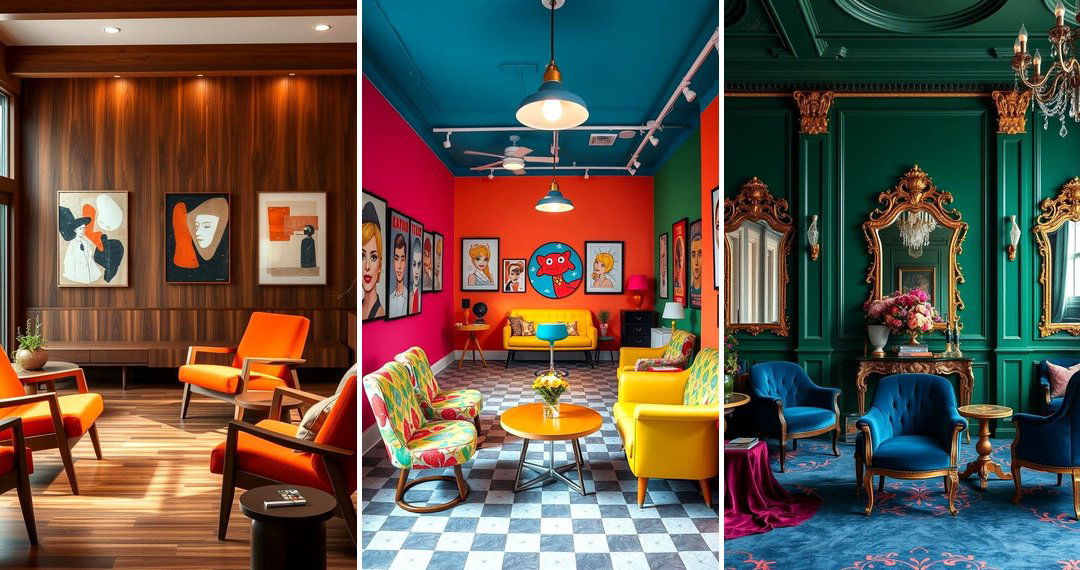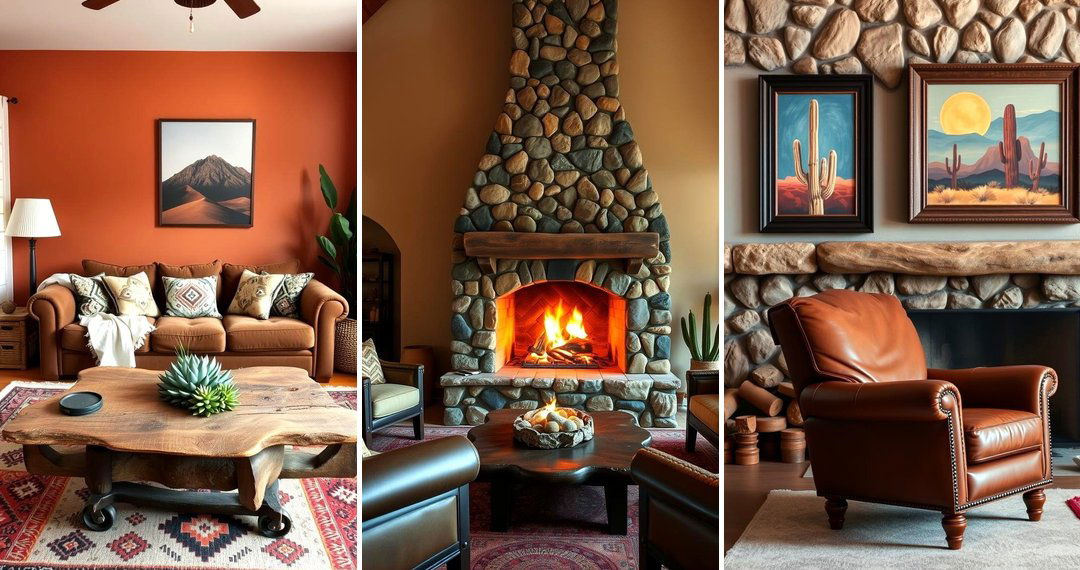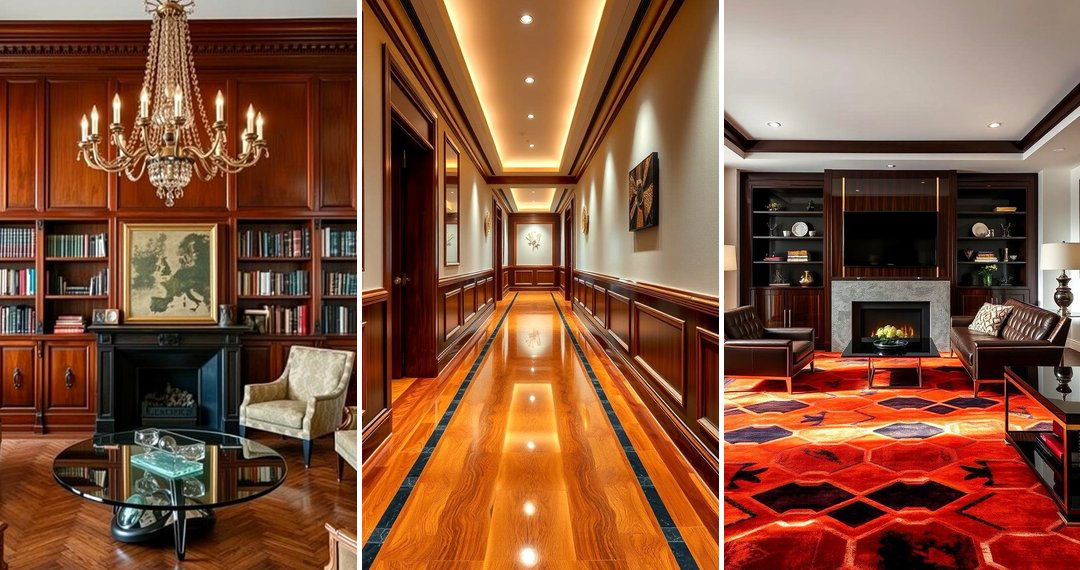The Victorian era, spanning from 1837 to 1901, left an indelible mark on interior design, characterized by opulence, grandeur, and a fascination with detail. These design principles offer a timeless elegance that can still inspire and enhance contemporary living spaces. By understanding the key elements of Victorian style, you can introduce touches of this rich aesthetic into your own home, creating an atmosphere of sophistication and comfort. Let's delve into the captivating world of 24 Victorian interior design ideas, each promising to infuse your space with a unique charm and historical depth, encouraging you to explore the next level of home décor with these Victorian interior design ideas.
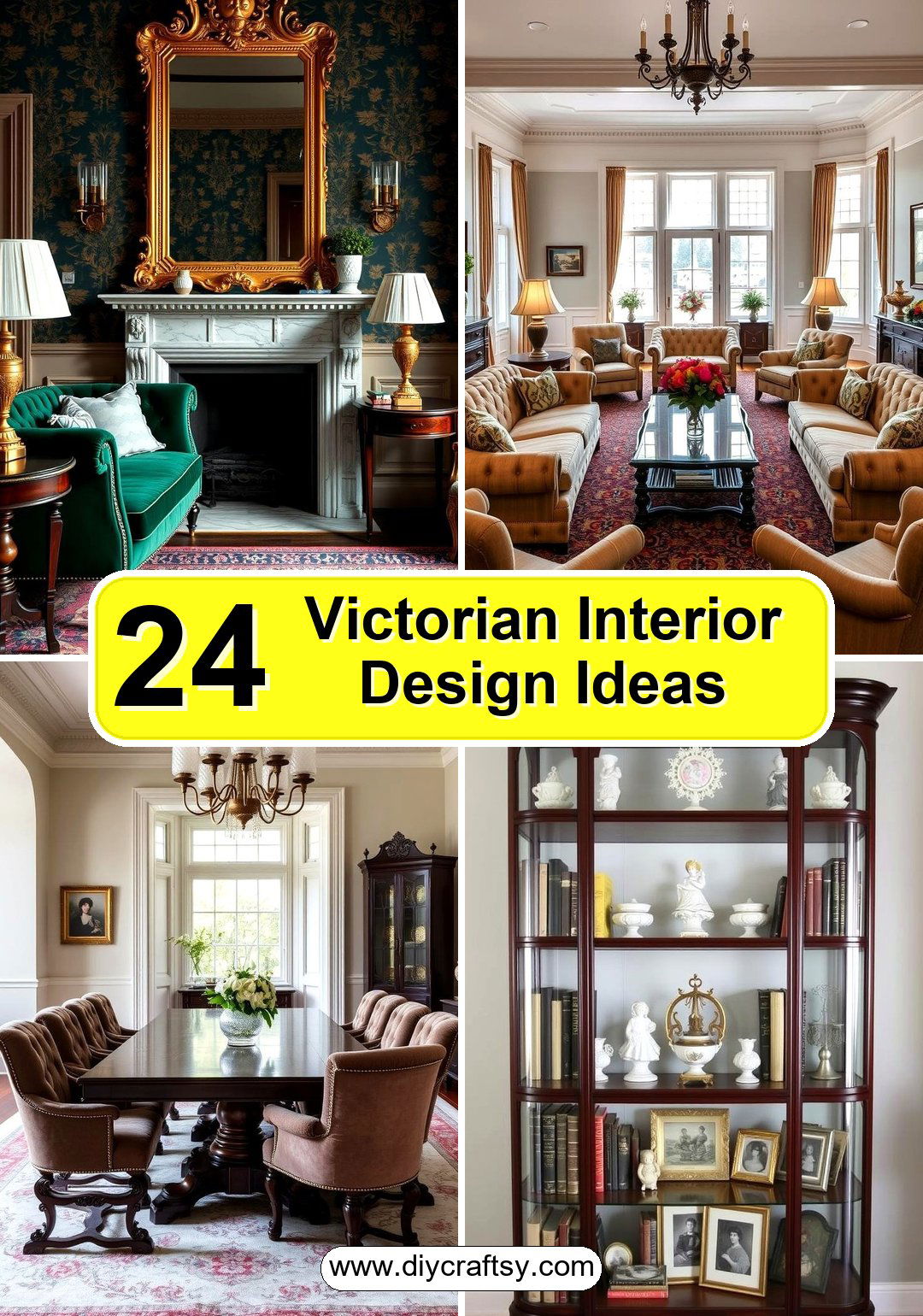
1. Rich Velvet Fabrics
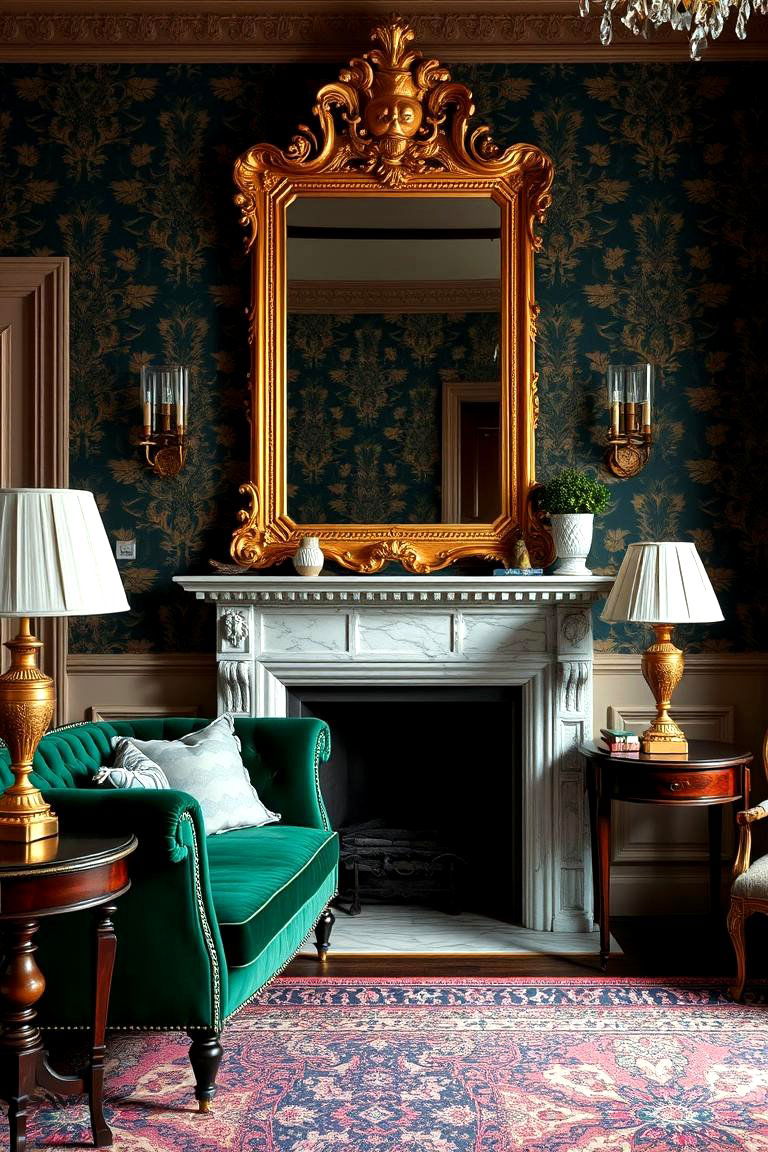
Bringing a touch of unparalleled luxury, incorporating rich velvet fabrics is a hallmark of Victorian design. Think plush velvet upholstery on sofas and armchairs, heavy velvet drapes cascading from tall windows, and even velvet cushions scattered for added comfort. The inherent sheen and deep colors of velvet evoke a sense of opulence and warmth, instantly elevating the sophistication of any room. Moreover, velvet's durability ensures that these pieces not only look magnificent but also stand the test of time, making it a practical yet indulgent choice for your home.
2. Ornate Gold Detailing
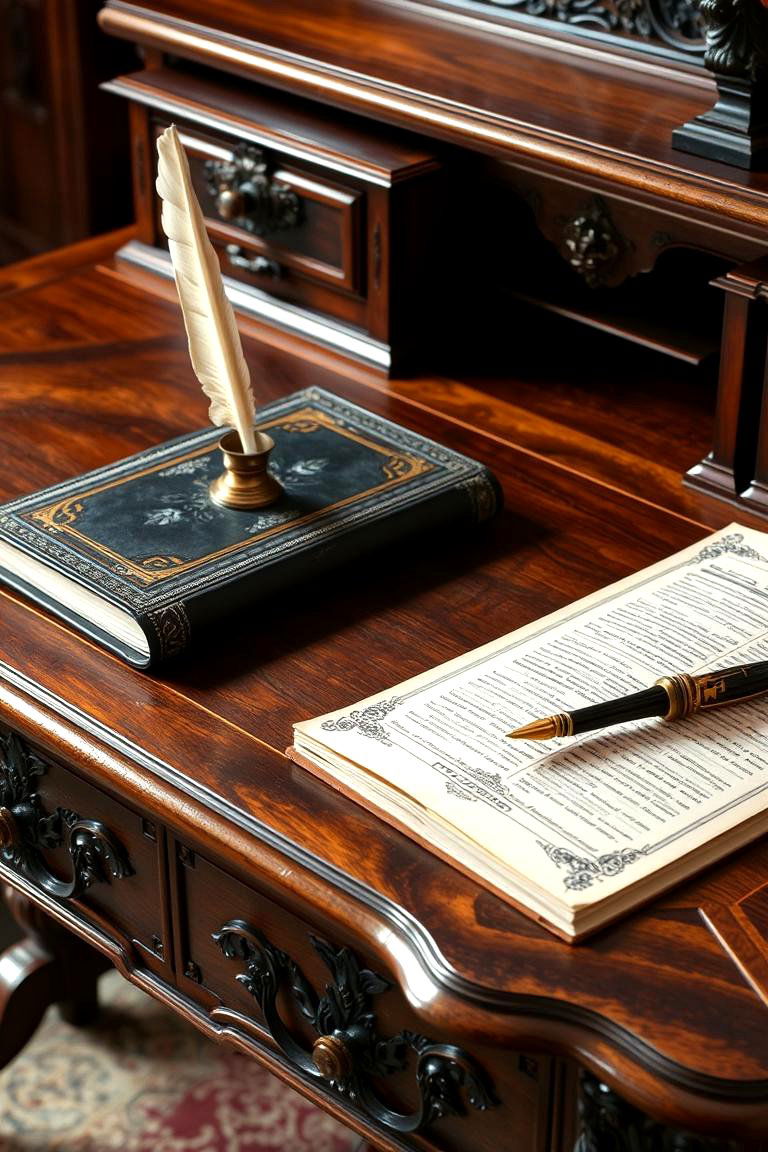
With its ability to catch the light and exude extravagance, ornate gold detailing was a prevalent feature in Victorian interiors. Consider adding gilded frames to artwork and mirrors, selecting light fixtures with gold accents, or incorporating small gold decorative objects like candle holders and figurines. This subtle yet impactful use of gold can highlight architectural features and add a layer of visual interest. Furthermore, gold accents pair beautifully with the rich, dark color palettes often found in Victorian design, creating a harmonious and luxurious feel.
3. Dark Wood Furniture

The Victorians favored substantial and imposing furniture crafted from dark woods such as mahogany, walnut, and rosewood. These pieces often featured intricate carvings, adding to their grandeur and visual appeal. Investing in a few key pieces like a dark wood dining table, a stately sideboard, or a beautifully carved desk can instantly imbue a space with Victorian charm. Beyond their aesthetic appeal, dark wood furniture pieces are typically very well-made and durable, often becoming cherished heirlooms passed down through generations.
4. Patterned Wallpaper

Another defining characteristic of Victorian interiors is the use of bold, patterned wallpapers. These were often richly colored and featured intricate designs such as florals, damasks, and geometric motifs. Introducing patterned wallpaper, even on a single accent wall, can dramatically transform a room, adding depth and visual texture. For those hesitant to commit to all walls, consider using wallpaper in smaller spaces like hallways or powder rooms to create a striking focal point. The variety of available patterns ensures you can find one that perfectly complements your personal style.
5. Tufted Upholstery
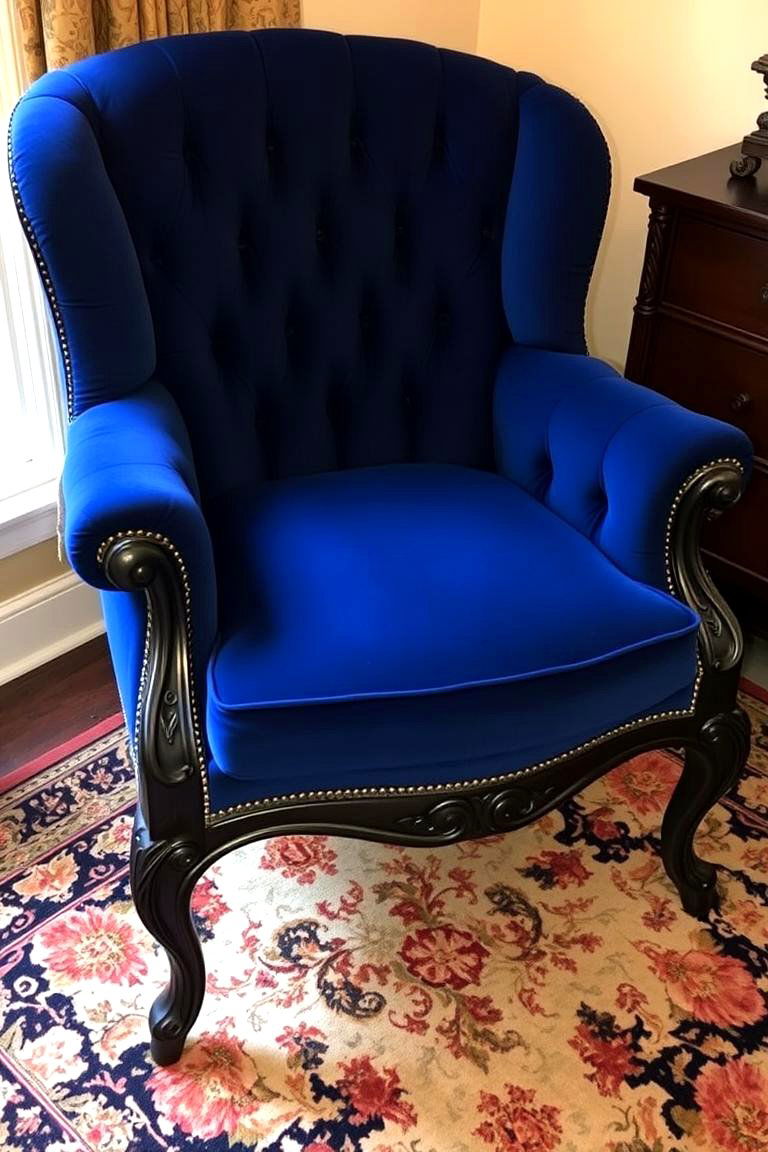
Consider the luxurious comfort and visual appeal of tufted upholstery, a popular choice during the Victorian era. This technique, where fabric is pulled and secured at regular intervals, creates a distinctive diamond or square pattern, adding texture and depth to sofas, chairs, and headboards. Tufted pieces not only look elegant but also offer enhanced comfort and support. Whether you opt for a grand tufted Chesterfield sofa or a pair of tufted accent chairs, these pieces will undoubtedly add a touch of Victorian sophistication to your living space.
6. Grand Fireplaces

For many Victorian homes, the fireplace served as the central focal point of a room. Grand, often ornate fireplaces made of marble, stone, or cast iron were common. Even if your home doesn't have an original Victorian fireplace, incorporating a statement fireplace surround can recreate this sense of grandeur. Adorn the mantelpiece with decorative objects, candles, and framed artwork to further enhance its presence. Beyond their aesthetic value, fireplaces provide warmth and a cozy ambiance, making them a practical and beautiful addition to any living area.
7. Heavy Drapes and Swags
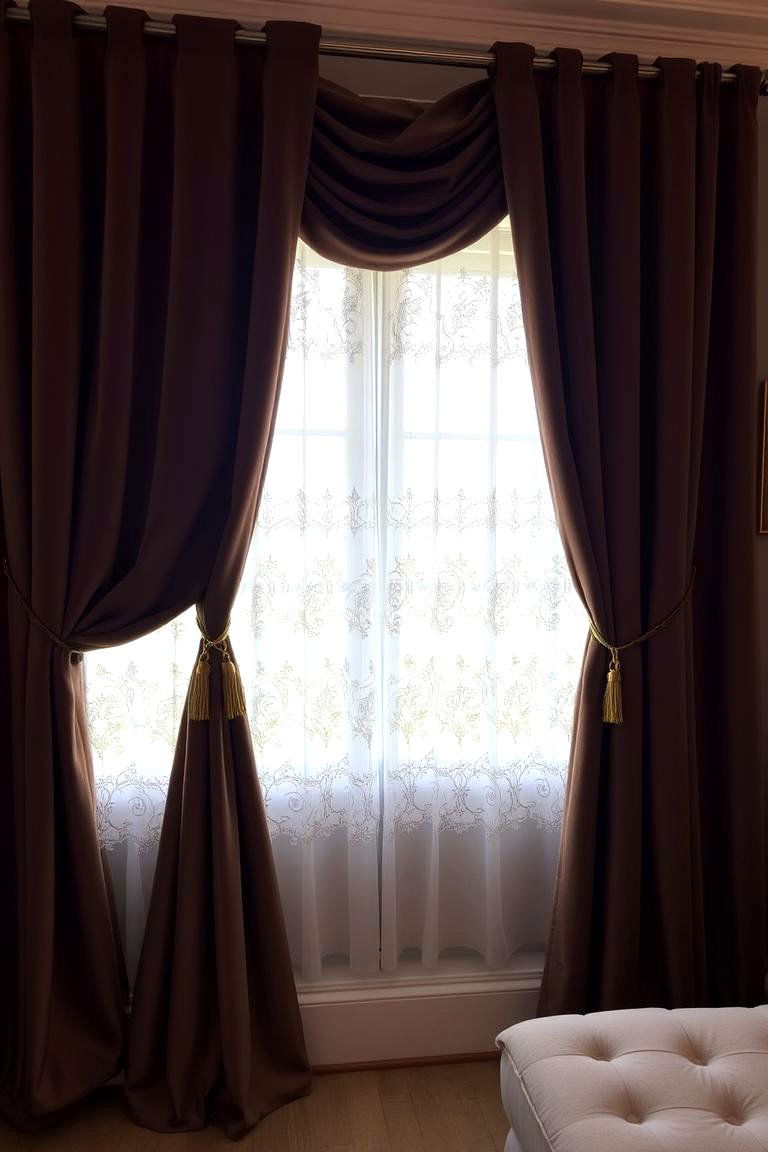
With a focus on privacy and insulation, window treatments in Victorian interiors were often elaborate and layered. Heavy drapes made from rich fabrics like velvet or brocade were paired with sheers or lace curtains. Adding decorative swags, valances, and tiebacks further enhanced the opulent look. While modern interpretations might simplify the layering, incorporating heavy, floor-length drapes in luxurious fabrics can still evoke a strong Victorian feel. These window treatments not only add elegance but also help control light and temperature within the room.
8. Gas Lighting Fixtures (or replicas)
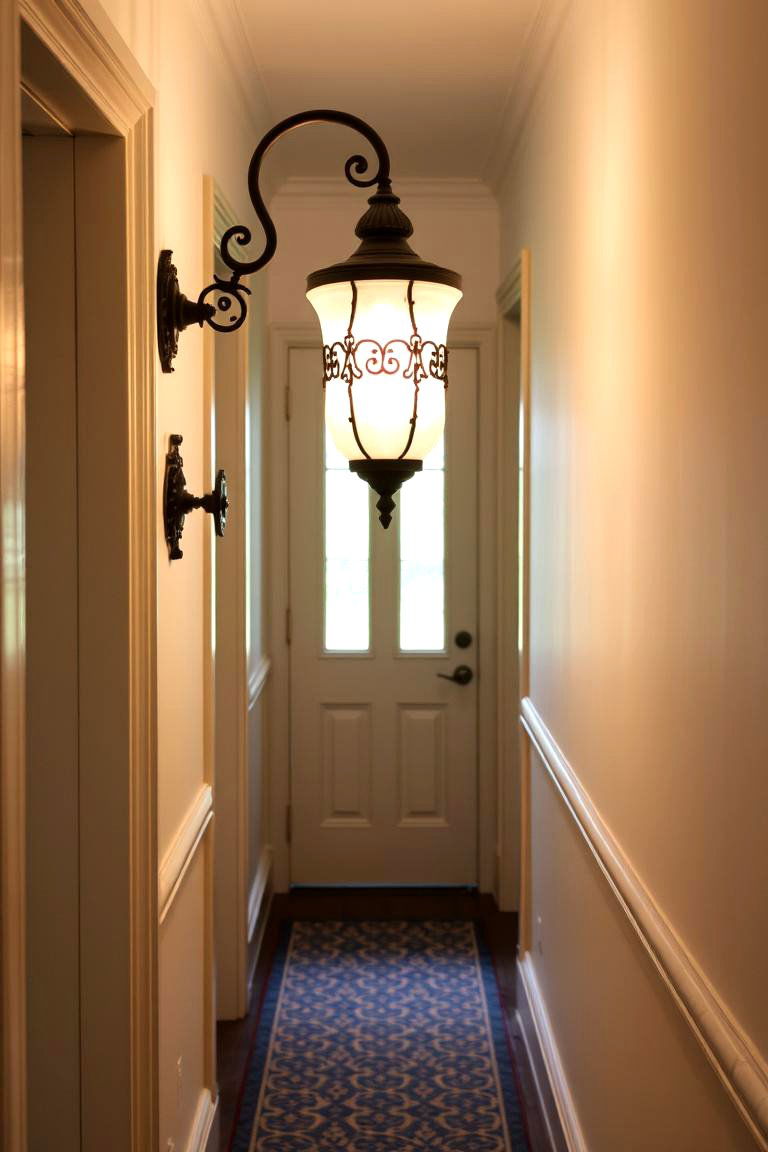
At the time, gas lighting was a modern marvel, and elegant gas-style chandeliers and wall sconces were prominent features in Victorian homes. Today, you can easily find beautiful replicas that capture the same aesthetic without the complexities of gas. These fixtures often feature intricate metalwork, frosted glass shades, and a warm, inviting glow. Replacing modern light fixtures with Victorian-inspired designs can significantly enhance the period feel of a room. Consider a statement chandelier in the dining room or elegant wall sconces in the hallway.
9. Oriental Rugs

The Victorians had a great appreciation for the exotic, and richly patterned Oriental rugs were highly prized additions to their homes. These rugs, often featuring intricate floral or geometric designs in deep jewel tones, added warmth, color, and a touch of global flair to hardwood floors. Incorporating an authentic antique Oriental rug or a high-quality reproduction can instantly elevate the elegance of a room. These rugs are not only visually stunning but also incredibly durable and can become cherished pieces that last for generations.
10. Taxidermy and Natural Elements

Reflecting the Victorian fascination with the natural world, the display of taxidermy, framed insects, botanical prints, and other natural curiosities was common. While taxidermy might not appeal to everyone today, incorporating botanical prints, framed butterflies, or collections of seashells and minerals can still capture this Victorian sensibility. These elements add a unique personal touch and reflect an appreciation for the beauty and wonder of nature. Display them in elegant frames or on shelves to create visually interesting vignettes.
11. Collections and Curiosities

Displaying personal collections was a significant aspect of Victorian interior design. Whether it was a collection of porcelain dolls, antique books, or travel souvenirs, showcasing these items in elegant display cabinets or on shelves added personality and visual interest to a room. Start curating and displaying your own treasured possessions. This not only adds a personal touch but also serves as conversation starters and reflects your unique history and interests.
12. Formal Parlors

Consider creating a dedicated formal parlor, a space specifically designed for receiving guests and engaging in polite conversation. This room typically featured comfortable yet formal seating arrangements, often with separate seating areas for ladies and gentlemen. While a dedicated parlor might not be practical for all modern homes, designating a living room or a section of it for more formal entertaining can evoke this Victorian tradition. Focus on creating a balanced and elegant arrangement of furniture that encourages conversation.
13. High Ceilings and Tall Windows
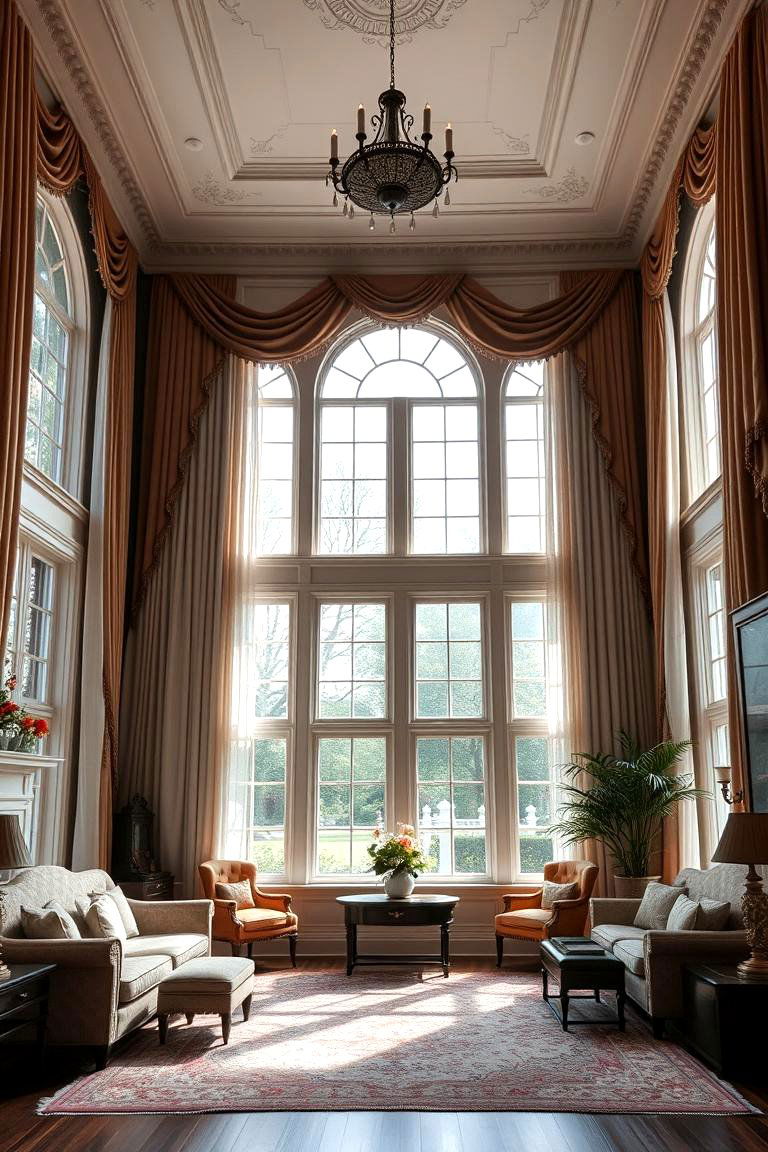
With their emphasis on grandeur, Victorian homes often featured high ceilings and tall windows, which allowed for ample natural light and created a sense of spaciousness. While you can't change the fundamental architecture of your home, you can emphasize these features if they exist. Use tall, floor-length curtains to accentuate window height and choose furniture that is appropriately scaled for the room. If your ceilings are lower, using vertical design elements like tall bookshelves or striped wallpaper can create the illusion of height.
14. Elaborate Mirrors

The strategic use of large, ornate mirrors was another key element of Victorian interior design. These mirrors, often featuring heavily gilded frames, not only served a practical purpose but also helped to reflect light and create the illusion of a larger space. Consider hanging a large statement mirror above a fireplace or placing one on a wall opposite a window to maximize its impact. The intricate detailing of the frames adds to the overall opulence and visual interest of the room.
15. Dark and Moody Color Palettes
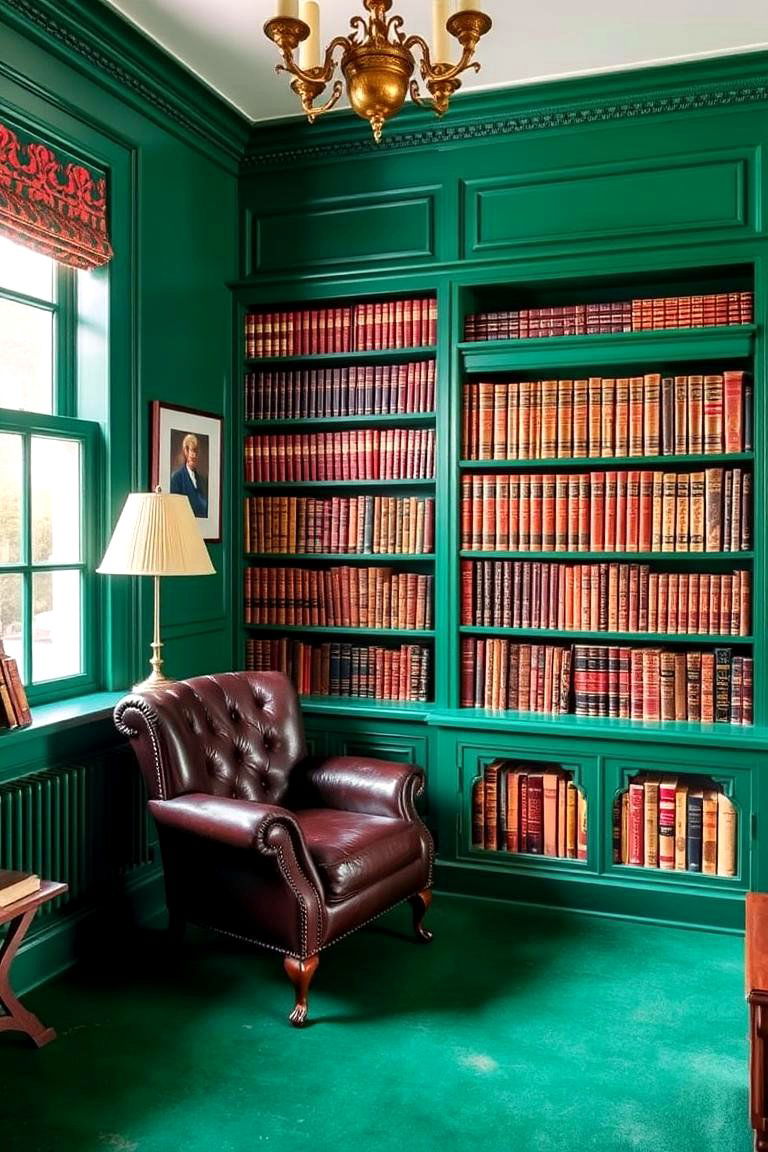
Consider embracing the rich and dramatic color palettes favored during the Victorian era. Deep jewel tones such as emerald green, sapphire blue, ruby red, and amethyst purple were popular choices, often used in combination with darker neutrals like deep browns and grays. These colors create a sense of warmth, intimacy, and sophistication. While an entire room in dark colors might feel overwhelming, using these shades as accents or on feature walls can add a touch of Victorian drama to your space.
16. Intricate Plasterwork

A hallmark of Victorian architecture and interior design is intricate plasterwork. This can be seen in decorative moldings around ceilings and walls, elaborate cornices, and ornate ceiling roses. While installing original plasterwork might be a significant undertaking, you can find reproduction moldings and ceiling roses that capture the same aesthetic. These details add a layer of architectural interest and sophistication to a room, enhancing its overall Victorian feel.
17. Button-Back Chairs and Sofas
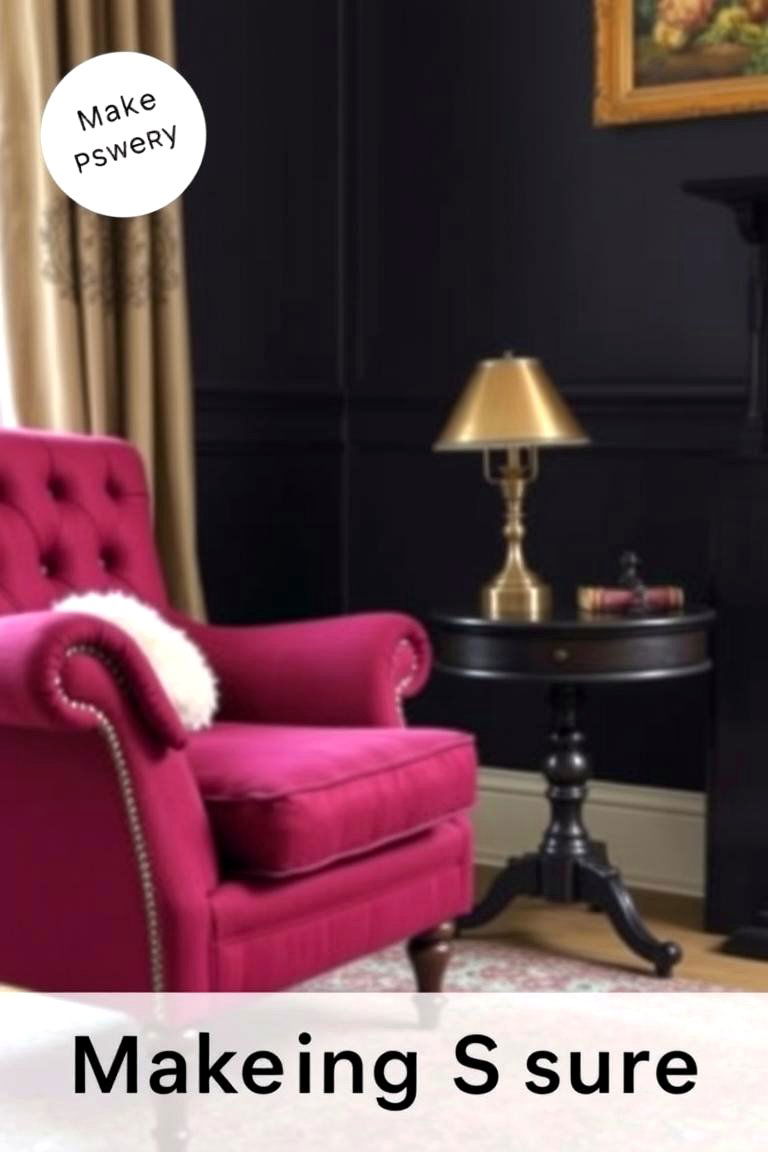
Another distinctive furniture detail of the Victorian era is the use of button-back upholstery. Similar to tufting, button-back involves securing fabric with buttons, creating a textured and visually appealing surface. This technique was commonly used on chairs and sofas, adding a touch of elegance and formality. Incorporating a button-back armchair or a sofa into your living space can instantly evoke a Victorian sensibility and provide a comfortable and stylish seating option.
18. Etagères and Display Cabinets

To showcase their prized possessions, Victorians often used elegant étagères (open shelving units) and display cabinets with glass doors. These pieces of furniture provided both storage and a way to display collections of books, artwork, and decorative objects. Consider adding an étagère to your living room or a display cabinet to your dining room to create a focal point and showcase your own treasured items in a Victorian-inspired manner.
19. Framed Artwork and Portraits
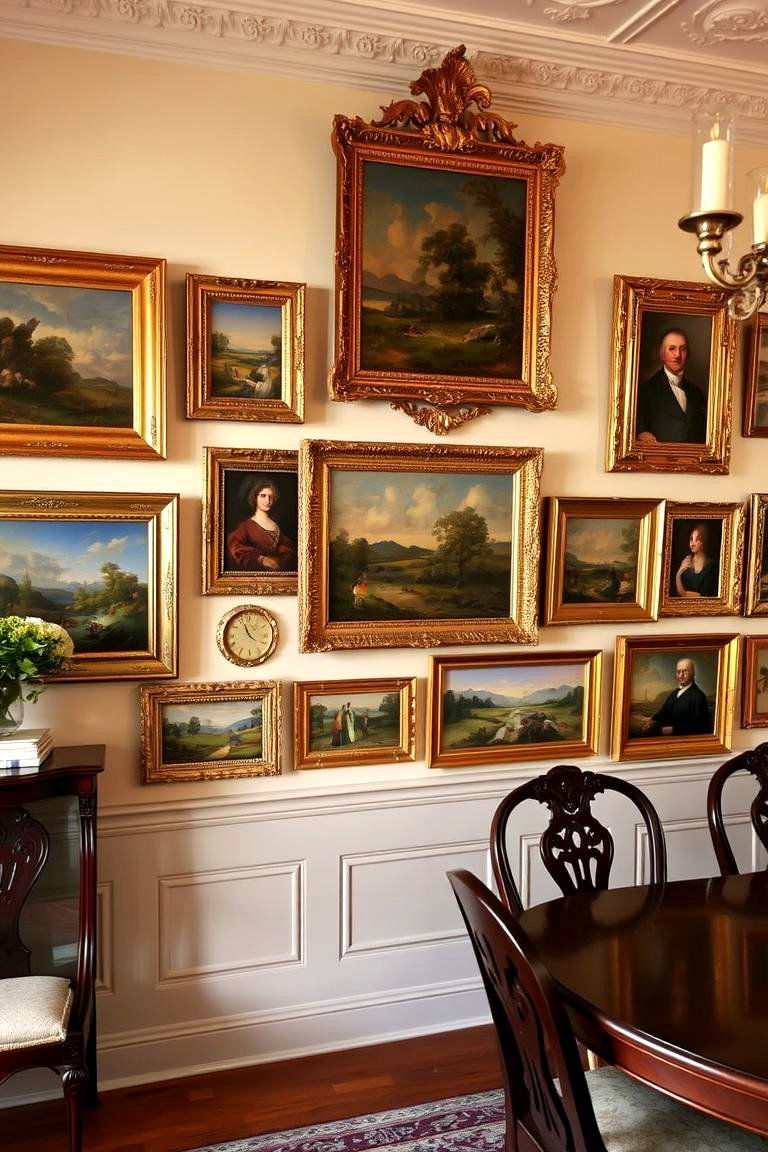
Adorning walls with framed artwork and portraits was an essential element of Victorian interior design. Oil paintings in ornate frames, family portraits, and detailed engravings were commonly displayed, often hung salon-style (covering a large portion of the wall). Start building your own collection of framed art that reflects your taste and complements your Victorian-inspired decor. Consider mixing different sizes and styles of frames for a more authentic look.
20. Piano as a Statement Piece
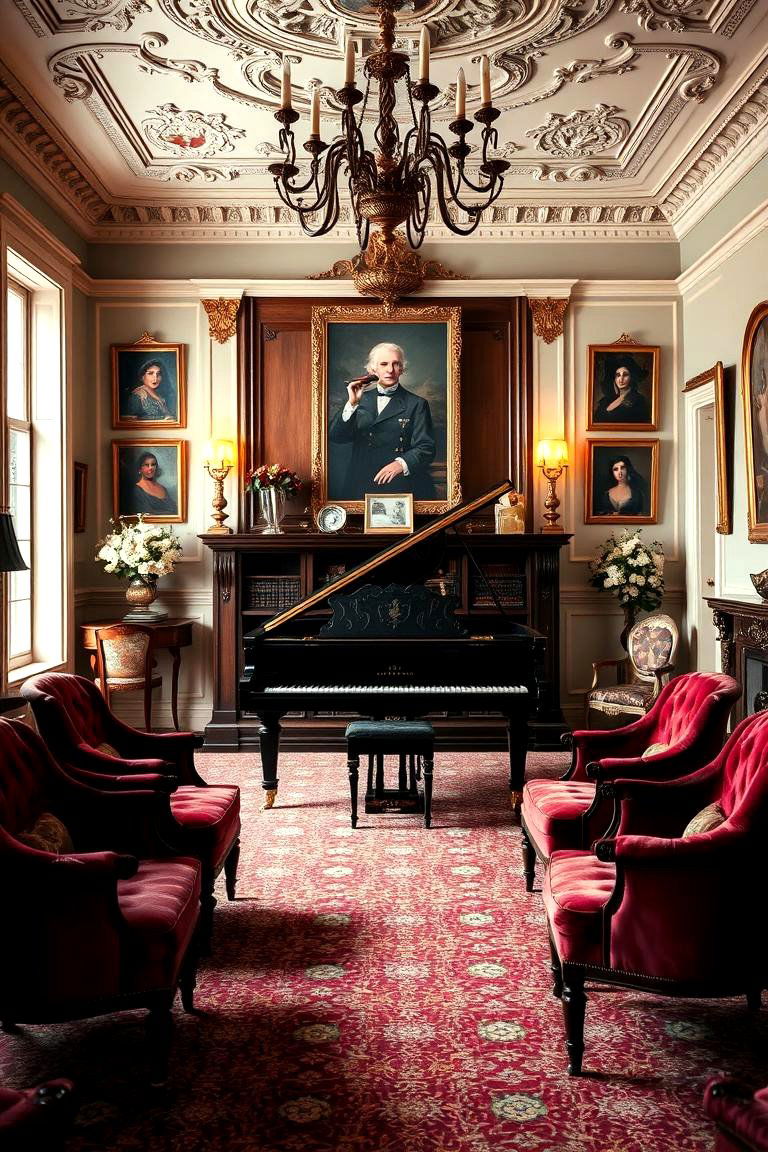
In many Victorian homes, particularly those of the middle and upper classes, a piano served as a symbol of culture and refinement. Often placed prominently in the parlor or drawing-room, a grand piano could be a stunning statement piece. If you have the space and an appreciation for music, incorporating a piano into your decor can add a significant touch of Victorian elegance and create a focal point for entertaining.
21. Leather Accents

While dark wood and rich fabrics dominated, leather also played a role in Victorian interiors. Leather was often used for upholstery on chairs and desks, adding a touch of masculinity and durability to the decor. Consider incorporating leather accents through a classic leather armchair, a leather-topped writing desk, or even leather-bound books to add another layer of Victorian texture and sophistication to your space.
22. Writing Desks and Secretaries

With a strong emphasis on correspondence and intellectual pursuits, writing desks and secretaries were important pieces of furniture in Victorian homes. These elegant pieces often featured intricate details, drawers for storage, and sometimes even hidden compartments. Incorporating a beautiful writing desk or secretary into your study or living area can not only add a touch of Victorian charm but also provide a functional and stylish workspace.
23. Floral Arrangements

Bringing the beauty of the outdoors inside was important to the Victorians, and large, opulent floral arrangements were a common sight. These arrangements often featured a variety of blooms in rich colors and were displayed in elaborate vases. Incorporating fresh flowers regularly into your decor, opting for full and colorful arrangements, can instantly add a touch of Victorian elegance and life to your home.
24. Stained Glass Details
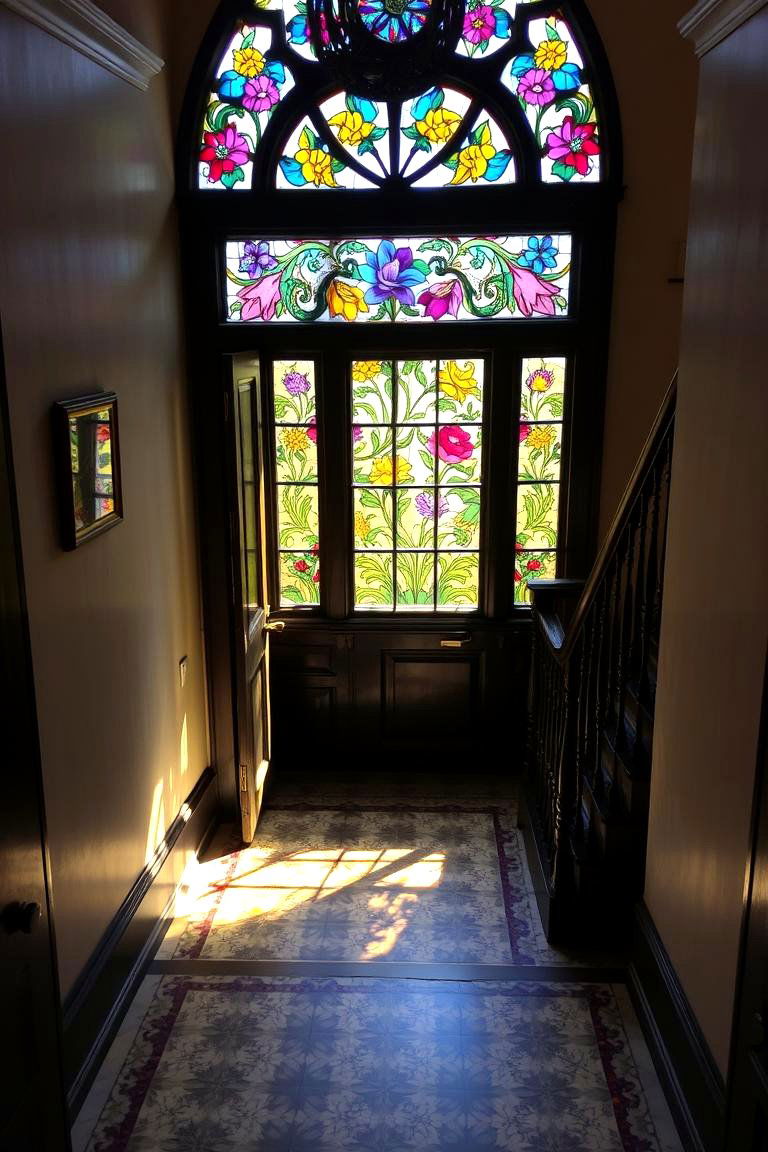
Finally, consider incorporating stained glass details to add a touch of Victorian artistry and color to your interior. Stained glass was often used in windows, particularly in entryways and stairwells, as well as in decorative panels and lampshades. The interplay of light and color through stained glass can create a beautiful and unique visual effect. Even a small stained glass panel can add a significant touch of Victorian charm to your home.
The Victorian era offers a wealth of inspiration for creating sophisticated and inviting interiors. By thoughtfully incorporating elements like rich velvet fabrics, ornate gold detailing, dark wood furniture, and patterned wallpapers, you can capture the essence of this elegant period in your own home. Whether you choose to embrace a fully Victorian aesthetic or simply introduce subtle nods to the era, these 24 Victorian interior design ideas provide a fantastic starting point for transforming your living spaces. Explore these Victorian interior design ideas further to discover the perfect blend of historical charm and contemporary living for your home.
Conclusion:
The enduring appeal of Victorian interior design lies in its celebration of detail, comfort, and a certain sense of grandeur. From the plush textures of velvet and the gleam of gold accents to the stately presence of dark wood furniture and the intricate beauty of patterned wallpapers, each element contributes to a rich and layered aesthetic. Embracing these 24 Victorian interior design ideas allows you to infuse your home with a timeless elegance, creating spaces that are both visually stunning and deeply inviting. By thoughtfully selecting and integrating these design principles, you can craft an interior that not only reflects a fascinating historical period but also perfectly suits your modern lifestyle, making your home a true sanctuary of style and comfort.


